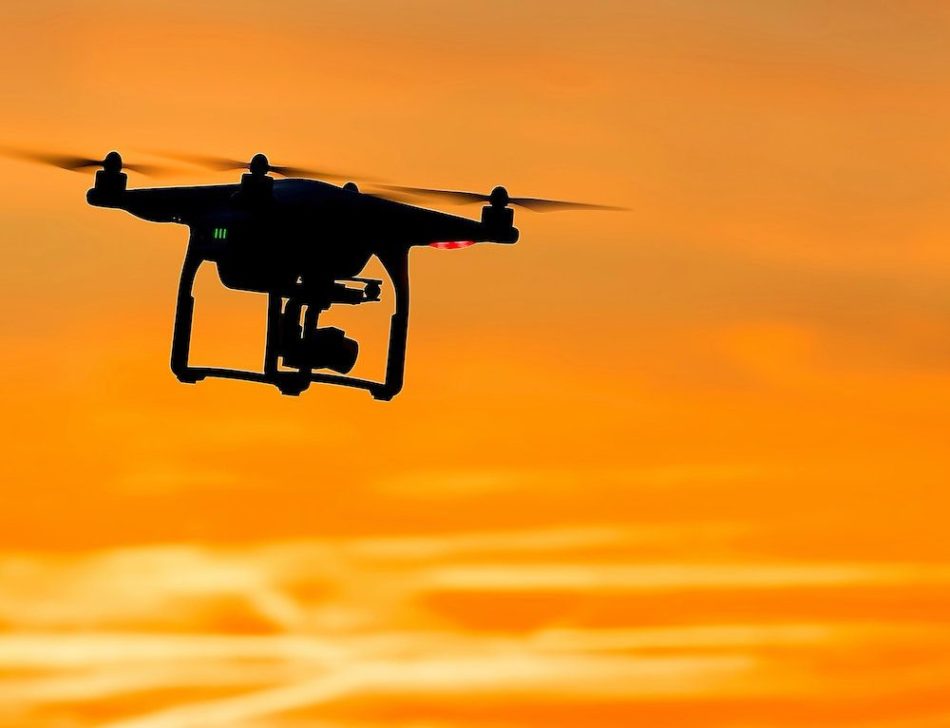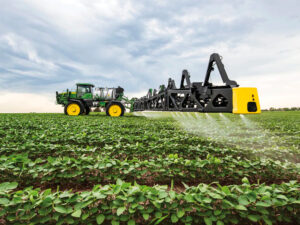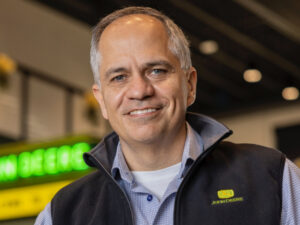AgroScout was in the final stages of negotiating a late-seed-stage funding round when coronavirus struck. The Israeli remote sensing startup watched venture dealmaking grind to a halt. But the team managed to eke out $3 million in commitments.
“They were already committed, so they’ve committed to this,” AgroScout’s CEO Simcha Shore tells AFN.
The success of AgroScout‘s round is all the more remarkable because drone companies aren’t exactly the latest hot thing in agritech. According to AgFunder research, such tech reached its funding peak five years ago, when investors committed $326 million to startups promising an agricultural future where skies were filled with super-agronomist drones, capable of mapping or spraying fields with unprecedented efficiency and precision.
The years since, however, haven’t been as kind to agri-drone companies. The hyped-up visions of 2015 went into a something of a tailspin long before the global outbreak of Covid-19 forced investors to broadly reassess expectations.
But drones are uniquely suitable for a pandemic that requires strict social distancing in the workplace and can enhance supply chain traceability amid major disruptions in the movement of global goods. Could AgroScout’s fundraising success signal renewed investor interest in agri-drone tech?
There have been various headwinds for drones in the agrifood sector, not least startups’ own challenges with designing viable strategies for the tech to scale. AgroScout is trying to confront that problem with what Shore calls the “Uberization of the process of remote sensing.”
“No one is going to send a plane or a drone to the majority of fields in the world,” he told a group of mostly German investors at Israeli incubator Trendlines in Galilee last fall.
The company takes a distributed approach – a sharp contrast to centralized remote-sensing service providers like Taranis. It designs flight maps that agronomists can use with any ordinary commercial drone and smartphone to detect, identify, and monitor diseases, pests, and other field issues. The findings can be reviewed within the app from anywhere in the world; agronomists’ expert decisions then help train the app’s algorithms.
Taranis, meanwhile, is developing its own route to fast, scalable, and accurate pest and disease detection. It’s offering high-spec hardware and services to major partners to help them deploy and build out their solutions. The Taranis team team say they combine 0.5 mm-per-pixel leaf-level drone imagery; ultra-high-resolution full-field imagery from planes; and satellite imagery at 1.2 meter per pixel resolution. They can cross-reference those images against an agronomic knowledge base covering about one million crop-health issues. Taranis recently partnered with Lanafil, a major Uruguayan distributor of fertilizers and plant protection products.
AgroScout and Taranis are both unique examples in a sense. AgroScout, as a relatively new remote-sensing player, has the benefit of seeing what didn’t work among its earlier peers. For Taranis, being an early mover appears to have worked to its advantage – a rugged survivor as others have folded or pivoted to other sectors.
While there are plenty of burnout startups from 2015, there is evidence to suggest that other early agri-drone fundraising darlings are, like Taranis, figuring out pathways to scalability. PrecisionHawk has a $75 million Series D under its belt to build AI-powered aerial data analytics, and DroneDeploy raised a $35 million Series D backed by Bessemer VP, albeit to expand into new industries, according to AgFunder’s 2019 investment report.
Regulatory hurdles
From the get-go, regulation has proven a persistent bugbear for agri-drone startups, with aviation authorities in many countries preventing the vehicles from operating out of the line of sight. Others have banned use of spraying drones altogether. The Covid-19 environment seems an ideal time to revisit regulations, given drones’ potential for contactless delivery. If this happens, Shore reckons that rules will ease on farms sooner than in cities.
“Using drones to spray fields is also a sort of delivery, so those sorts of things will happen a lot earlier than an Amazon drone on your roof delivering your package,” he says.
Shore also sees real promise in the disease detection space, where much of the world still relies on agronomists physically walking through fields. He says diseases are often only detected in their later stages, requiring large amounts of pesticides to control the problem.
AgroScout aims to reduce the amounts of chemicals used to treat crop disease by detecting problems earlier, Shore adds. Using less pesticide lowers costs and meets increasingly strict regulation and intensifying consumer demand for more sustainable agricultural practices.
Tech challenges
Besides persistent challenges with scalability and regulation, cumbersome technical issues have curbed agri-drone adoption worldwide. Working over far-flung fields comes with connectivity bottlenecks, rapid depletion of limited-life batteries, and equipment exposure to harsh natural elements – or even theft. Consistency and precision in converting large volumes of remote data into actionable insights also remains a problem. And earlier perceived advantages of drones’ image quality over low-flying planes or satellites have also been called into question as such craft get better at capturing multi-spectral imagery or picking up microwaves to detect moisture.
Fleets of drones have had a measure of success in some parts of the world, particularly in China. That said, the payload and ability to fly for long periods of time still pales in comparison to planes or on-the ground equivalents. Case in point: John Deere revealed its giant VoloDrone to fanfare at the latest Agritechnica Show in Hanover, Germany. However, the device can only fly for 30 minutes on charge.
Ground-level robotics are challenging drone technology too. Both robots and autonomous tractors come with the added advantage of carrying larger payloads of field treatments, and have a leaf-level view of pests like insects and weeds. At the International Federation of Agricultural Robotics meet last December, all varieties of ground robots were on display, demonstrating their increasing sophistication at surveying, spraying, and harvesting without having to take flight. Nevertheless, cost and regulation are still hurdles to in-field adoption for these technologies as well.
Companies like the UK’s Haybeesee are searching for a middle ground between the mobility of drone quadri-copters and the proximity of ground robots. Its device is a peculiarly bouncy crop-hopper.
“They don’t have any loss in the system like you do with hovering drones,” Haybeesee founder Fred Miller tells AFN. “You don’t have the mud issues you have with wheels.”
Other companies, like Taranis, are now using a plethora of tools, leveraging datasets from planes, drones, and satellites in order to provide a meaningful service to agricultural stakeholders.
Cost v adoption
For most farmers, advanced agronomic and remote monitoring systems of all varieties are still simply too expensive and inaccessible. AgroScout is hoping its distributed platform begins to change that. As its system relies on off-the-shelf, low-cost equipment, such as smartphones and small commercial drones, the startup aims to provide an affordable and easy-to-use solution based solely on user-generated content. The company has joined Oracle for Startups and uses Oracle Cloud Infrastructure Data Science to help keep track of the potentially huge amount of incoming data.
AgroScout is also working to devise a fully remote monitoring system, equipped with docking stations made in collaboration with Bird Stop that can weather field conditions and provide daily recharging and autonomous flights. The partners are gearing up for a pilot of the system with a large North American potato processor, the company says.
To best understand what farmers need and will use in their fields, AgroScout expects to get unique perspective from its latest lead investor, Kibbutz Yiron. Kibbutzim, Israel’s traditional collective farming communities, have become key players in the country’s agtech ecosystem, with many serving as early adopters. The largest and most well-established are often run by the biggest names in Israeli agriculture. Kibbutz Yiron, for example, has Israel’s former agriculture minister, Shalom Simchon, serving as its economic committee chairman.
“To maximize yields [and] mitigate disease and loss of produce, farmers have to incorporate advanced technology in their daily work,” Simchon said in a statement announcing AgroScout’s latest funding.
There may be ways yet to integrate drones into that equation with a platform that is scalable, he added. “We are excited about AgroScout’s abilities to provide early detection of pests, disease, and other risks for crops, enabling real-time farmer interventions to decrease pesticide use, lower production costs, and grow produce in a more sustainable way.”

















Sponsored
International Fresh Produce Association launches year 3 of its produce accelerator